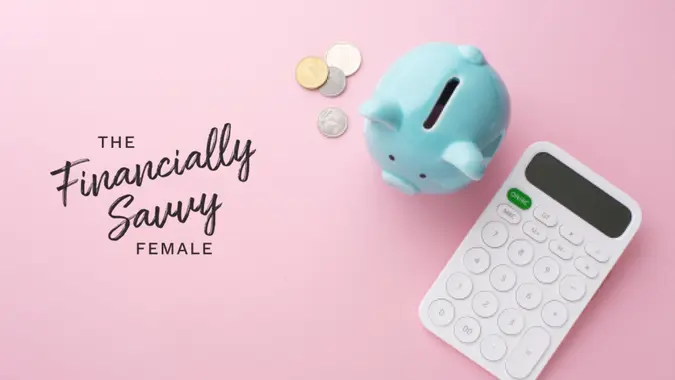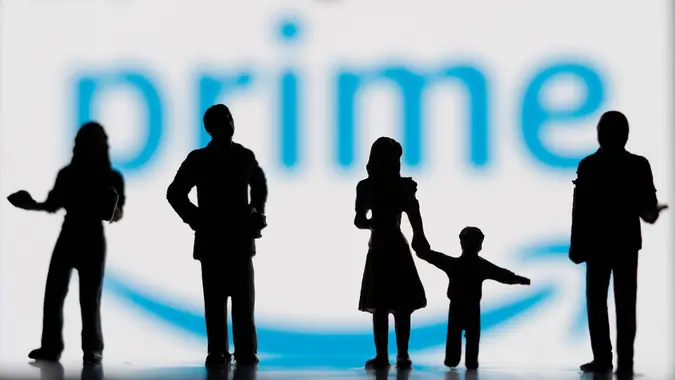4 Ways To Tell How Long Your Emergency Fund Will Actually Last

Commitment to Our Readers
GOBankingRates' editorial team is committed to bringing you unbiased reviews and information. We use data-driven methodologies to evaluate financial products and services - our reviews and ratings are not influenced by advertisers. You can read more about our editorial guidelines and our products and services review methodology.

20 Years
Helping You Live Richer

Reviewed
by Experts

Trusted by
Millions of Readers
In a recent GOBankingRates survey, 37.4% of respondents admitted to having no emergency savings, 7.4% had enough saved up for six months, and 11.6% had enough saved up for more than six months. Just 15.4% of respondents had more than $5,000 saved in their emergency fund. In comparison, over 30% had zero emergency savings.
But everyone’s financial situation is different, and $5,000 will last drastically different amounts of time depending on your expenses. Experts advise you to have three to six months’ worth of expenses in your emergency fund, but how can you tell how long your emergency fund will really last? Here are five ways you can find out.
Next, if you need to build up your emergency savings, give your finances a boost with the seven-day savings challenge.
Figure Out How Much You’re Spending Monthly
“The first step to having an accurate amount in emergency savings is knowing how much you’re spending,” said Taylor Lee, a CFP and financial advisor at Belmont Capital Advisors, Inc. “This could be as simple as totaling up expenses on a piece of paper.”
When you have your monthly expenses calculated, divide your emergency savings by your expenses — that will give you the number of months you can expect your fund to last.
When calculating the length of time your emergency savings will last, the assumption should be that your income suddenly drops to zero. In this case, the goal of an emergency fund is to help you get through this challenging period as you figure out what to do next.
Tally Up All Expenses for a More Accurate Timeline
Lee recommended finding your average monthly expenses by tallying up every possible cost you could have to deal with, including “annual or semi-annual expenses, like car insurance or taxes on your house.”
Because you can’t predict when you might lose your job, including these less frequent but still necessary expenses may give you a more realistic number.
Determine Your Essential Expenses
“Figuring out how long your emergency fund will last is all about understanding your essential monthly expenses,” said Erika Kullberg, an attorney, personal finance expert and founder of Erika.com. “While that might sound easy, when it comes down to it, we can often find it difficult to find the line between what is truly essential and what you just really like to have or do with your money.”
What are examples of essential expenses?
- Rent or mortgage
- Utilities
- Cell phone
- Groceries
- Insurance
- Debt payments.
You’ll need to cover all non-negotiable items even if you don’t have any money coming in. While you can limit how much you dine out or travel, you can’t instantly cut out your rent or car insurance. An important caveat about essential expenses is that you would have to embrace frugal living if you were to rely on this figure to determine how long your emergency fund would last.
Kyle Enright, a consumer finance expert and president of Achieve Lending, said, “A good goal for an emergency fund is enough to cover six to nine months of base living expenses. Base living expenses are not the same thing as your normal monthly spending or the salary you make.”
If you’ve saved up $5,000, as 15% of the GOBankingRates survey respondents did, and your essential monthly expenses are $2,500, you could survive on your emergency fund for two months.
Create a Budget So You Have a Spending Plan
“To determine if you have enough to cover six or nine months, you need to have a good handle on your monthly spending,” Enright said. “If you don’t already have a good budget in place, this is the time to create one.”
This is similar to the first strategy, but instead of adding up your expenses, you’re determining what you want to spend — just make sure you’re being realistic.
You can use a spreadsheet, an app or a pencil and paper. The objective is to know that you may need to spend some time doing your research and expense tracking to determine all your expenses. Once you have an accurate budget, you have a spending plan that allows you to stay organized and not be confused about what’s happening with your money.
You can determine how long you could survive off your emergency fund by dividing your emergency savings by your budgeted expenses.
Include Every Expense Possible
Enright pointed out that you may want to go a little further by including every expense possible in your budget. Some of the additional costs to tally up include:
- Toiletries and other essential items
- Gas and other transportation to get you to work and necessary appointments
- Medicine for you and your family
- Child care.
Enright noted that most people are surprised at how much their base cost of living is, but just from doing this exercise, you can identify expenses to cut. It’s vital that you review your discretionary spending habits and have a solid grasp of how much you normally spend so that you can accurately determine how long your emergency savings will last.
Methodology: GOBankingRates surveyed 1,001 Americans aged 18 and older from across the country between Oct. 17 and Oct. 22, 2024, asking twelve different questions: (1) What is your main financial goal for 2025?; (2) How do you plan on keeping yourself focused on your financial goal in 2025?; (3) If you’re planning to retire in 2025, what is your main financial concern?; (4) How much debt do you have?; (5) How do you plan on paying down your debt in 2025?; (6) How much time do you expect to spend planning your budget per month in 2025?; (7) Currently, what percentage of time do you stick to your budget?; (8) How much do you have in your emergency fund?; (9) How much do you expect to add to your emergency fund in 2025?; (10) How many months of your expenses do you have saved?; (11) What financial resources are you incorporating into your personal finances in 2025?; and (12) What’s your main financial concern going into 2025?. GOBankingRates used PureSpectrum’s survey platform to conduct the poll.
 Written by
Written by  Edited by
Edited by 

























